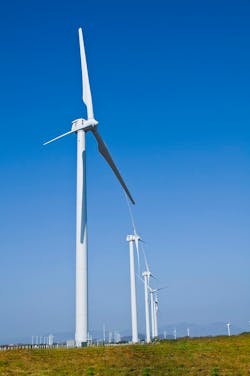NREL report IDs significant Renewable opportunities for Mexico
The U.S. Department of Energy’s National Renewable Energy Laboratory (NREL) has released an in-depth report on the current status and potential for clean energy development in Mexico – a country with abundant solar and wind resources as well as untapped geothermal and hydropower potential.
The Mexico Clean Energy Report noted that
· 26.7% of Mexico’s electricity was derived from clean energy resources in 2021
· 4.4% of electricity generated was from solar energy
· The installed capacity of geothermal energy was 1006 MW
· 60% of green hydrogen was imported into the country.
The report concluded that the national technical potential includes 24,918 GW of solar photovoltaics, 3,669 GW of wind, 2.5 GW of conventional geothermal, and 1.2 GW of additional capacity from existing hydropower facilities. The energy generated will be sufficient to meet the country’s electricity requirements 100 times over.
At present, PV potential is concentrated in North of Mexico, Southeast and Baja California Sur.
The right mix of policies and technical measures will attract large-sale investments to develop a robust clean energy matrix to meet the country’s energy goals and deliver social and economic benefits to citizens. With sufficient private sector investment, Mexico will be able to realize its clean energy potential fairly quickly and bring 15,257 MW of renewable energy online.
Moreover, it will significantly reduce the cost of electricity production, save $1.1 billion from the national system and generate $17 billion in new investment opportunities. More than 72,000 jobs may be created and greenhouse gases emissions reduced.
Some of the actions outlined in the report that may help boost clean energy development in Mexico include:
· The devising of regional renewable development programs
· Improvements in operations to integrate renewables and natural gas generations
· Offering expedited permitting process
· Expanding transmissions in areas with high resource potential
· Formulating regulations to increase energy democratization and system reliability
· Creation of sustainable transportation programs, including investment in charging infrastructure
Specifically for solar energy, the report outlined some steps to explore Mexico’s solar potential, which is six times larger than wind:
· Development of programs to bring about large solar development in key regions
· Enabling institutional finance mechanisms for projects
· Encouraging knowledge sharing with Centro Nacional de Control de Energía and academia for improved integration of variable renewable energy generation
· Push development and supply chain investments.
For Distributed Generation, the report recommended certain actions for the Government:
· Reducing financial barriers to adoption through direct financial investments and greater access to affordable financing
· Recalibration of interconnection procedures
· Formulation of regulations for shared solar and virtual net metering
· Expansion of current 500 kW capacity limit for DG
· Setting a clearly defined Comisión Federal de Electricidad role for DG
· Providing tariff subsidies to support DG investments
Meanwhile, the report also highlighted the benefits of policies and programs for the decarbonization of the transport sector, which accounts for 43% of fossil fuel usage and 22% of GHG emissions. It can foster the production of affordable EVs, establishment of charging infrastructure, electrification of last-mile transport and the replacement of long-distance road freight with rail.
To improve green hydrogen production status of Mexico, the report noted the need to develop a national hydrogen road map, develop renewable electricity resources and incentivize refuelling infrastructure.
Overall, the study emphasized the need for private sector investment in achieving Mexico’s clean energy goals that will have a low probability of occurring without changes to Mexico’s existing legal, regulatory, and electricity market frameworks.
NREL Laboratory Director Martin Keller said that Mexico can be a clean energy powerhouse, “and a vital part of maintaining North America’s competitive edge around the world. Realizing this potential will require energy policies that facilitate private investment and support our joint efforts on clean energy, climate, and supply chains.”
About the Author
EnergyTech Staff
Rod Walton is head of content for EnergyTech.com. He has spent 17 years covering the energy industry as a newspaper and trade journalist.
Walton formerly was energy writer and business editor at the Tulsa World. Later, he spent six years covering the electricity power sector for Pennwell and Clarion Events. He joined Endeavor and EnergyTech in November 2021.
He can be reached at [email protected].
EnergyTech is focused on the mission critical and large-scale energy users and their sustainability and resiliency goals. These include the commercial and industrial sectors, as well as the military, universities, data centers and microgrids.
Many large-scale energy users such as Fortune 500 companies, and mission-critical users such as military bases, universities, healthcare facilities, public safety and data centers, shifting their energy priorities to reach net-zero carbon goals within the coming decades. These include plans for renewable energy power purchase agreements, but also on-site resiliency projects such as microgrids, combined heat and power, rooftop solar, energy storage, digitalization and building efficiency upgrades.
